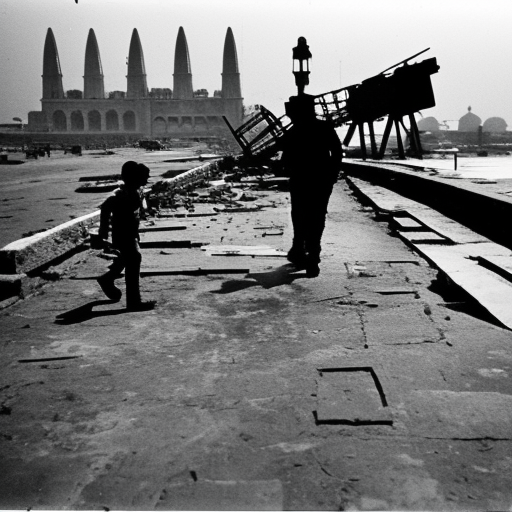Summary:
The 2001 Gujarat earthquake, also known as the Bhuj earthquake, was a devastating earthquake that struck the Indian state of Gujarat on January 26, 2001. With a magnitude of 7.7, it caused widespread destruction, claiming the lives of over 20,000 people and leaving thousands injured. The earthquake had a profound impact on the region, causing significant damage to infrastructure, homes, and businesses.
Causes and Magnitude:
The earthquake was caused by the movement of the Indian Plate beneath the Eurasian Plate along the Chaman Fault. This tectonic activity resulted in a rupture along a 700-kilometer stretch, with the epicenter located near the town of Bhuj. The earthquake had a magnitude of 7.7 on the Richter scale, making it a major seismic event.
Impact:
The impact of the Gujarat earthquake was devastating. Entire villages were flattened, and many buildings, including schools and hospitals, collapsed. The city of Bhuj, located near the epicenter, was particularly hard-hit, with almost 90% of its buildings destroyed or severely damaged. The destruction of critical infrastructure, such as roads, bridges, and power lines, hampered rescue and relief efforts.
Loss of Life and Injuries:
The earthquake resulted in a significant loss of life, with over 20,000 people reported dead and thousands more injured. The high casualty count was attributed to the poor construction quality of buildings and the lack of preparedness for such a seismic event. Many people were trapped under the debris, and the rescue operations faced numerous challenges due to the scale of the disaster.
Response and Relief Efforts:
The Indian government, along with national and international organizations, launched a massive relief operation to assist the affected population. The military was deployed to provide aid and support, while medical teams and supplies were mobilized to treat the injured. Temporary shelters were set up for those who had lost their homes, and efforts were made to restore essential services.
Reconstruction and Rehabilitation:
The reconstruction and rehabilitation process in the aftermath of the Gujarat earthquake was a massive undertaking. The government initiated various programs to rebuild infrastructure, including schools, hospitals, and roads. Financial assistance was provided to affected individuals and families to help them rebuild their lives. The process, however, was slow and faced challenges such as bureaucratic hurdles and corruption.
Long-Term Impact:
The Gujarat earthquake had a long-lasting impact on the region. The loss of lives and livelihoods had a profound emotional and economic impact on the affected communities. The earthquake also highlighted the need for better construction practices and disaster preparedness measures in earthquake-prone areas. It led to increased awareness and efforts to improve building codes and infrastructure resilience to mitigate the impact of future earthquakes.
Conclusion:
The 2001 Gujarat earthquake was a catastrophic event that caused extensive damage and loss of life in the Indian state of Gujarat. The response and relief efforts were significant, but the process of reconstruction and rehabilitation was challenging. The earthquake served as a wake-up call for better disaster preparedness and highlighted the importance of resilient infrastructure in earthquake-prone regions.












